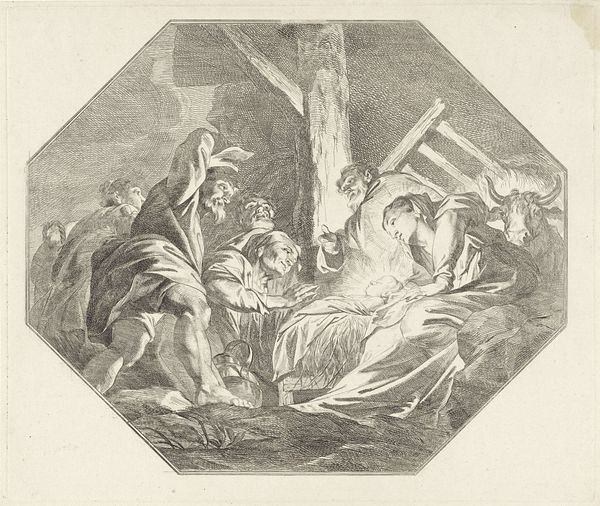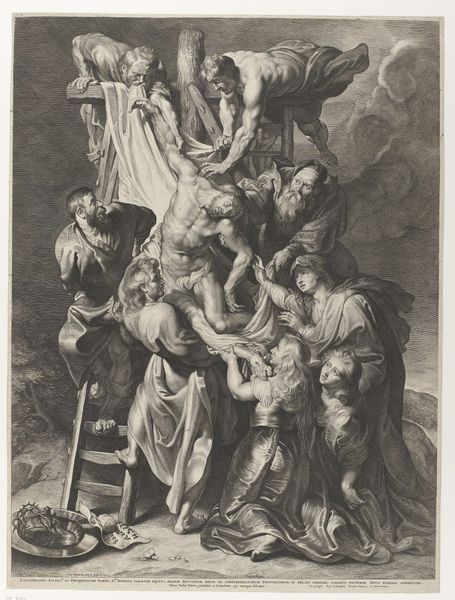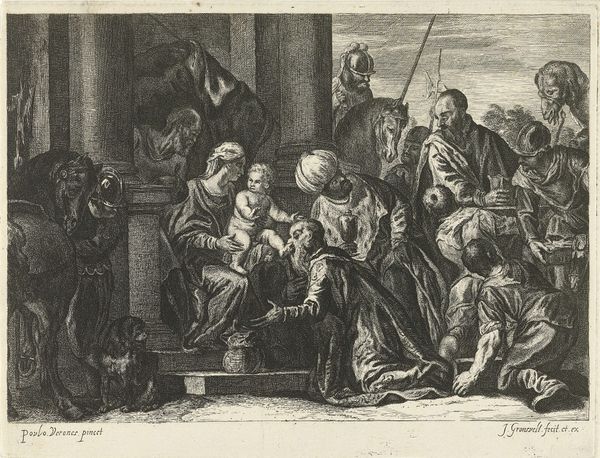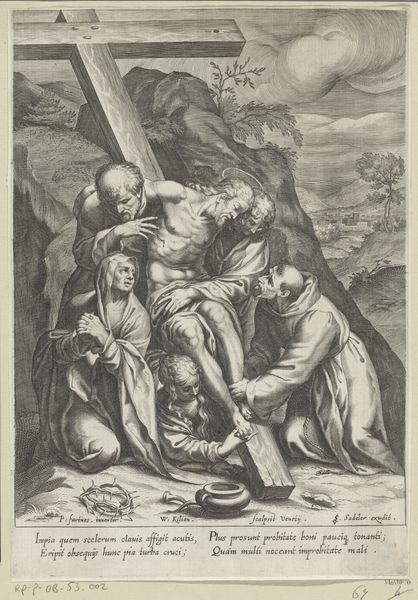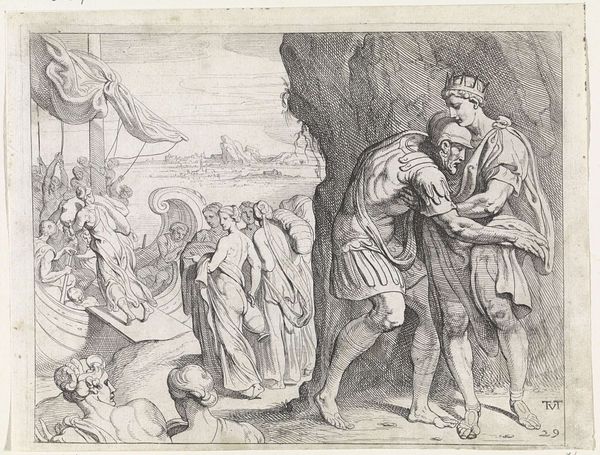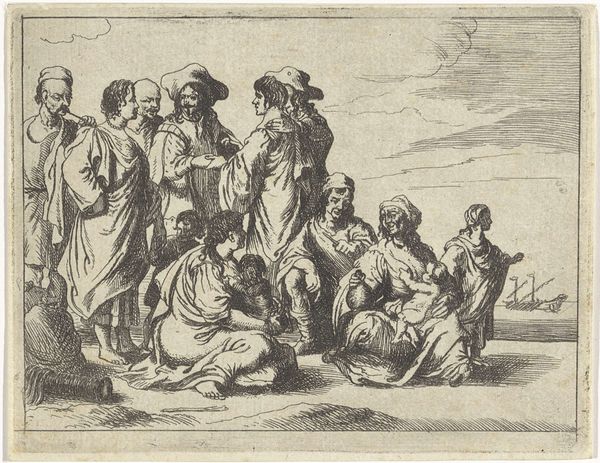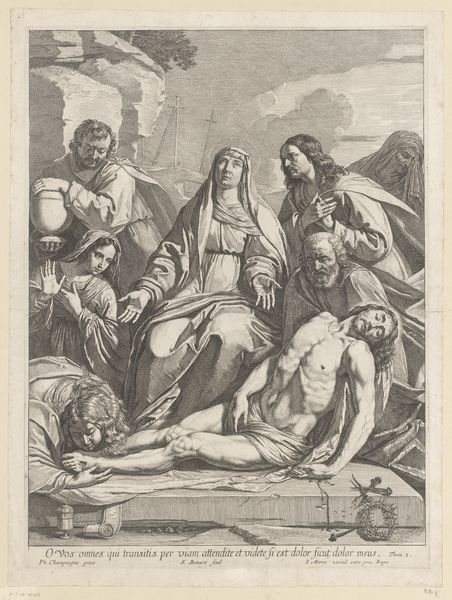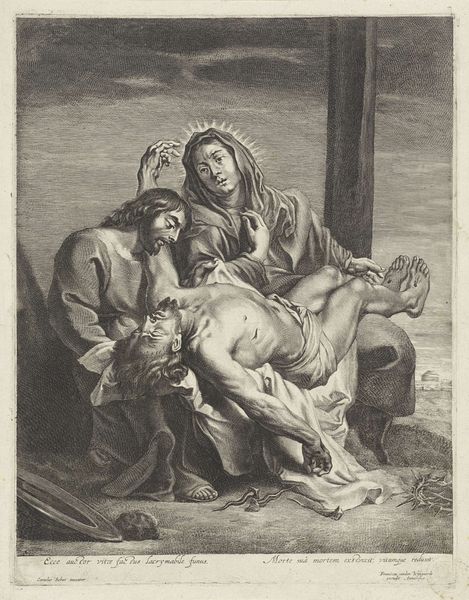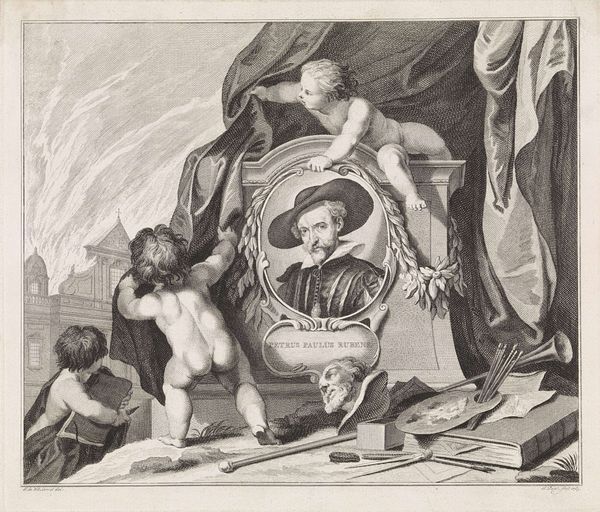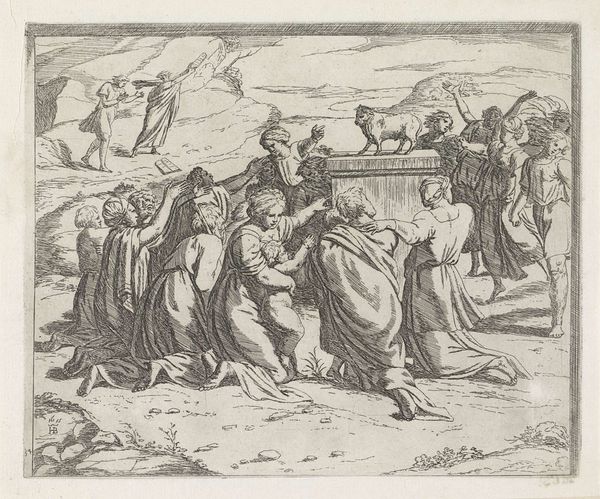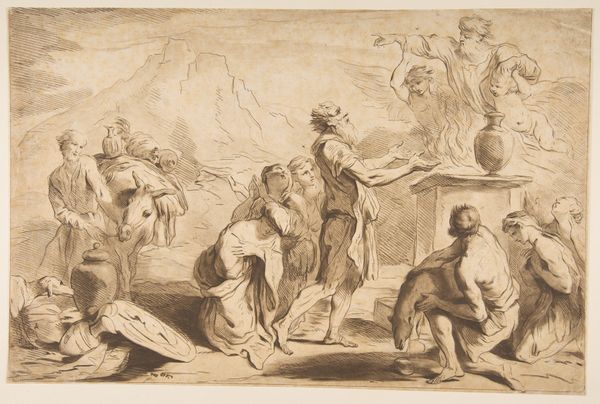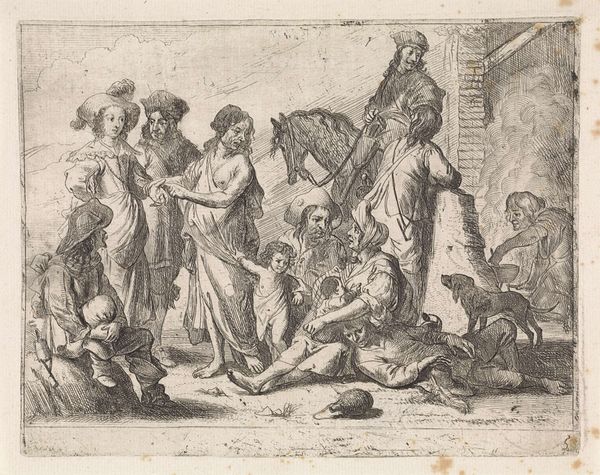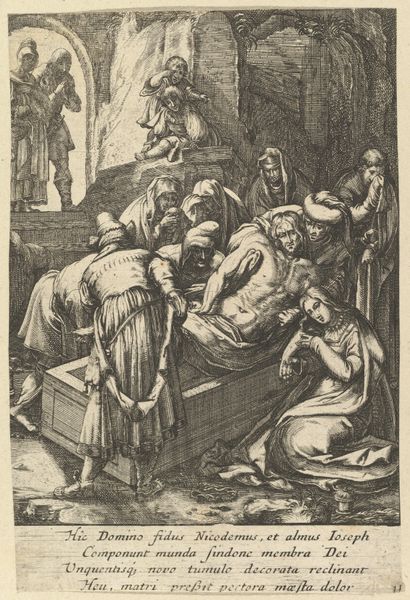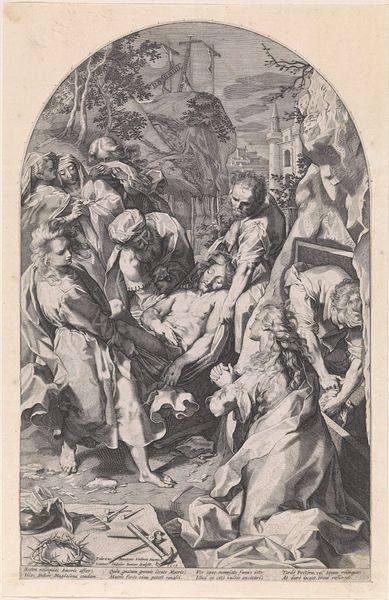
etching, engraving
#
narrative-art
#
baroque
#
etching
#
figuration
#
history-painting
#
engraving
Dimensions: height 150 mm, width 172 mm
Copyright: Rijks Museum: Open Domain
Curator: This is Frederik Ottens' "Kruisafname," or "Descent from the Cross," an etching and engraving from sometime between 1718 and 1770, housed right here at the Rijksmuseum. Editor: My first thought is, what a profoundly sad, solemn scene. The somber grays really emphasize the weight of the moment. Curator: Absolutely. The work comes from a specific cultural context, steeped in religious iconography. Consider the power dynamics inherent in depicting such a scene during the height of European colonialism and religious hegemony. What stories are amplified, and whose voices are silenced in this depiction of collective grief? Editor: Well, beyond that, it also feels as though we're seeing echoes of earlier depositions – like the intense emotion and body language that feels closely tied to the legacy of Caravaggio’s work in the previous century, a legacy very popular in Baroque Rome from which Ottens borrows. The composition has been reworked countless times across many eras. The central figures, the limp body of Christ, the supporting men, and grieving women--all these are archetypes. Curator: Precisely. And these archetypes perpetuate certain narratives while suppressing others. Are we meant to simply accept this image as a universal symbol of sacrifice, or should we question the power structures it reinforces, the historical conditions that allowed it to emerge and flourish? Look at the subdued role of women; their sorrow is palpable, but their agency is minimal, fitting into specific culturally enforced gender roles. Editor: True. But look closer at the composition. Ottens has subtly shifted things, using light and shadow to draw your eye across and up from the basin on the lower left to the face of Christ and ultimately, upward into the clouds. He's reminding us, visually, of a divine plan – something greater than immediate sorrow. The clouds even suggest a sort of ascension about to happen in the larger story. Curator: That formal analysis is valid, but I see it through the lens of political and social discourse. The ascent towards some divinely ordained hierarchy reinforces systems of power. Are the masses, represented by those grieving figures, being subtly urged to accept their earthly lot in anticipation of some future reward? This image doesn’t just represent a Biblical event, it participates in a much larger, ongoing cultural narrative of dominance and subjection. Editor: An interesting, though sobering point to consider. This print is so rich in historical imagery, from the cross to the faces in mourning. It will always evoke the emotion connected to an essential and poignant memory. Curator: I agree; it’s important for us to acknowledge those emotions even as we critically analyze the societal contexts within which these symbols operate.
Comments
No comments
Be the first to comment and join the conversation on the ultimate creative platform.
